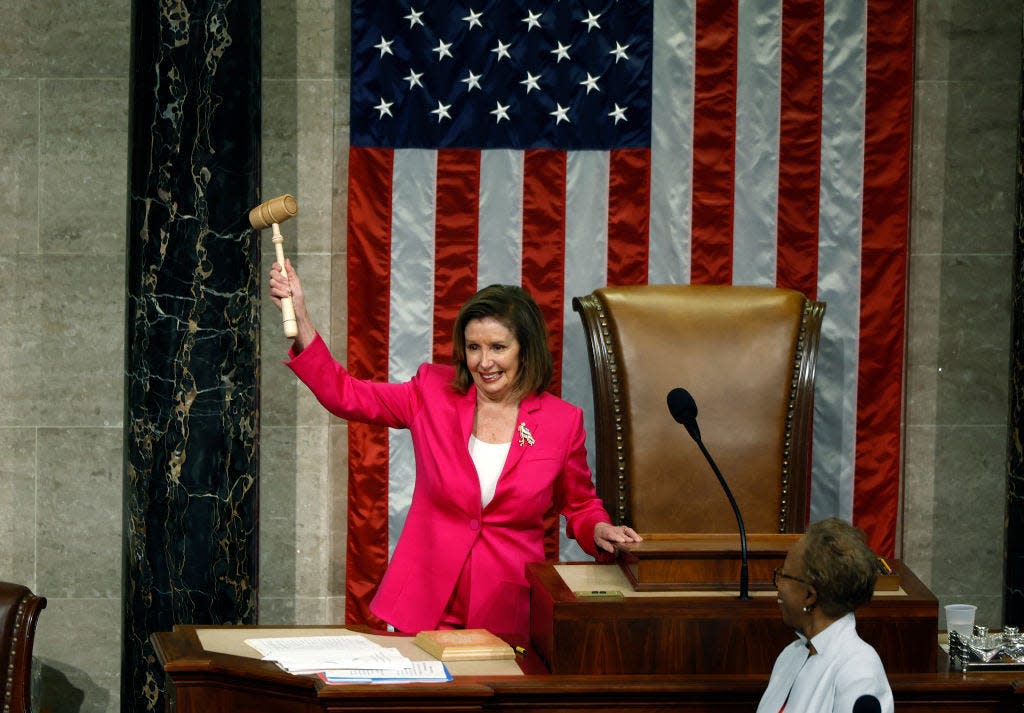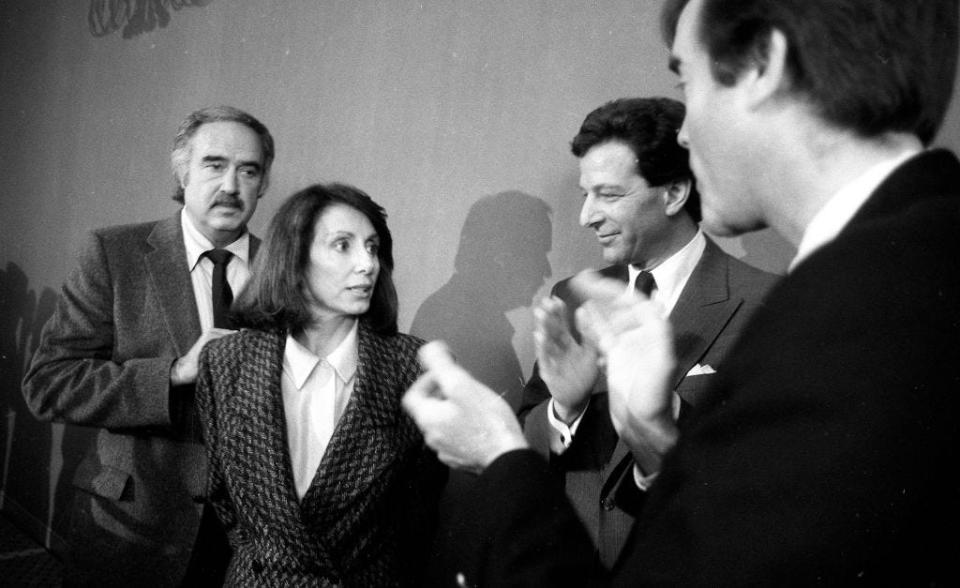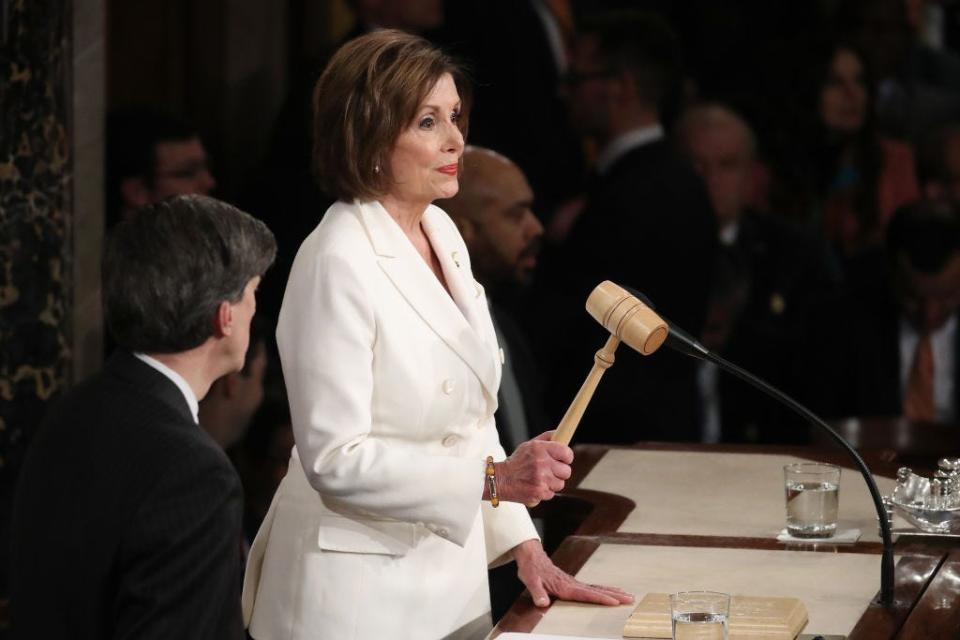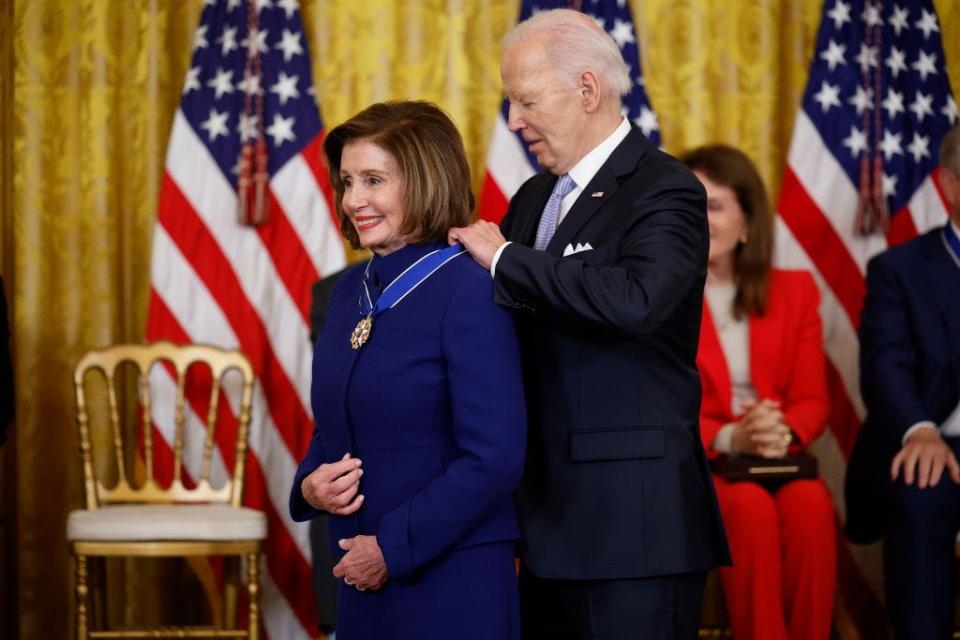How Nancy Pelosi became one of America's richest and most powerful politicians

- Oops!Something went wrong.Please try again later.
- Oops!Something went wrong.Please try again later.
Nancy Pelosi rose through the ranks of Congress to eventually become the first female House speaker.
It was a monumental achievement for the California lawmaker and native daughter of Baltimore.
And in many ways it was fueled by her early political instincts and her role as a full-time mother.
In many ways, Nancy Pelosi's political ascent was no surprise.
Decades before Pelosi become the first female House speaker in US history, she was Nancy D'Alesandro, the daughter of the highly influential Thomas D'Alesandro Jr., who served as a Maryland congressman and then as mayor of Baltimore from 1947 to 1959.
Nancy D'Alesandro was born in Baltimore on March 26, 1940, the youngest of seven children (and the only girl) in an Italian-American family that in the city was synonymous with public service.
She graduated from the Institute of Notre Dame in Baltimore in 1958 before attending Trinity College in Washington, DC, where she earned a bachelor's degree in political science. While in college, she attended President John F. Kennedy's 1961 inaugural address and even interned on Capitol Hill alongside now-Maryland Rep. Steny Hoyer, who rose from the state legislature to become the US House majority leader and one of the chamber's most respected legislators.
In September 1963, Nancy D'Alesandro married Paul Pelosi, whom she met in college. They then had five children: Alexandra, Jacqueline, Nancy Corinne, Christine, and Paul Jr. Along with her husband, Pelosi has an estimated net worth of $46 million.
In 1969, the Pelosi family would eventually move to San Francisco, where the future speaker reveled in being a full-time mother, a role that she said prepared her for her rise in California politics and on the national stage.
"That's one of the hardest things," Pelosi said of parenting in a 2019 interview with The Washington Post. "Makes going to work look easy, doesn't it?"

Welcome to San Francisco
San Francisco, which has traditionally been the center of political gravity in California politics, was a magnet for the counterculture in the 1960s and 1970s.
The Summer of Love. The Black Panthers and Black activism in the Bay area. The escalation of protests against the Vietnam War. The rise of the gay rights movement.
These movements had a major influence on the liberalism that would come to define the region.
During this era and in later years, Pelosi cut her teeth in the city's Democratic politics. In 1976, she became a Democratic National Convention committee member. From 1981 to 1983, she chaired the powerful California Democratic Party. And in June 1987, she was first elected to the House in a special election to succeed the late Rep. Sala Burton.
To this day, Pelosi still holds the San Francisco-anchored House seat.

Rise to the Top
In 2003, Pelosi became the first woman to lead a political party in Congress, serving as House Minority Leader.
Over the next three years, she worked fervently to regain a majority in the House of Representatives, recruiting Democratic candidates from across the ideological spectrum and raising millions of dollars.
In 2006, Democrats won control of the House after a 12-year drought, making Pelosi the first female speaker ever. She would assume the speaker's gavel in January 2007.
When President Barack Obama took office in 2009, Pelosi was instrumental in shepherding his legislative agenda through Congress, which notably included the Affordable Care Act, the American Recovery and Reinvestment Act, and the Lilly Ledbetter Fair Pay Act.
After Democrats lost the House majority in November 2010, she stayed on as minority leader until the party once again regained control of the lower chamber in 2018.
Pelosi served as a foil to President Donald Trump's conservative agenda during his final two years in office, even ripping up his February 2020 State of the Union speech after he appeared to snub her handshake prior to the televised address.
Once Joe Biden assumed the presidency in 2021, Pelosi once again used her political acumen to not only move the $1.9 trillion American Rescue Plan through the House, but also the bipartisan infrastructure legislation and the Inflation Reduction Act of 2022. All were signed into law by Biden.

The Future
After the GOP narrowly flipped the House in 2022, Pelosi stepped down from leadership, which meant that for the first time in 20 years, she was no longer leading the party's caucus in the lower chamber.
She was succeeded as House Democratic leader by Rep. Hakeem Jeffries of New York.
But Pelosi has remained active as a lawmaker and as a surrogate for Democrats as they aim to regain control of the House in November 2024.
The congresswoman, now 84 years old and a recent recipient of the Presidential Medal of Freedom, is running for reelection in the fall, adding another chapter to a career that has endured in Washington for nearly four decades.
Read the original article on Business Insider

